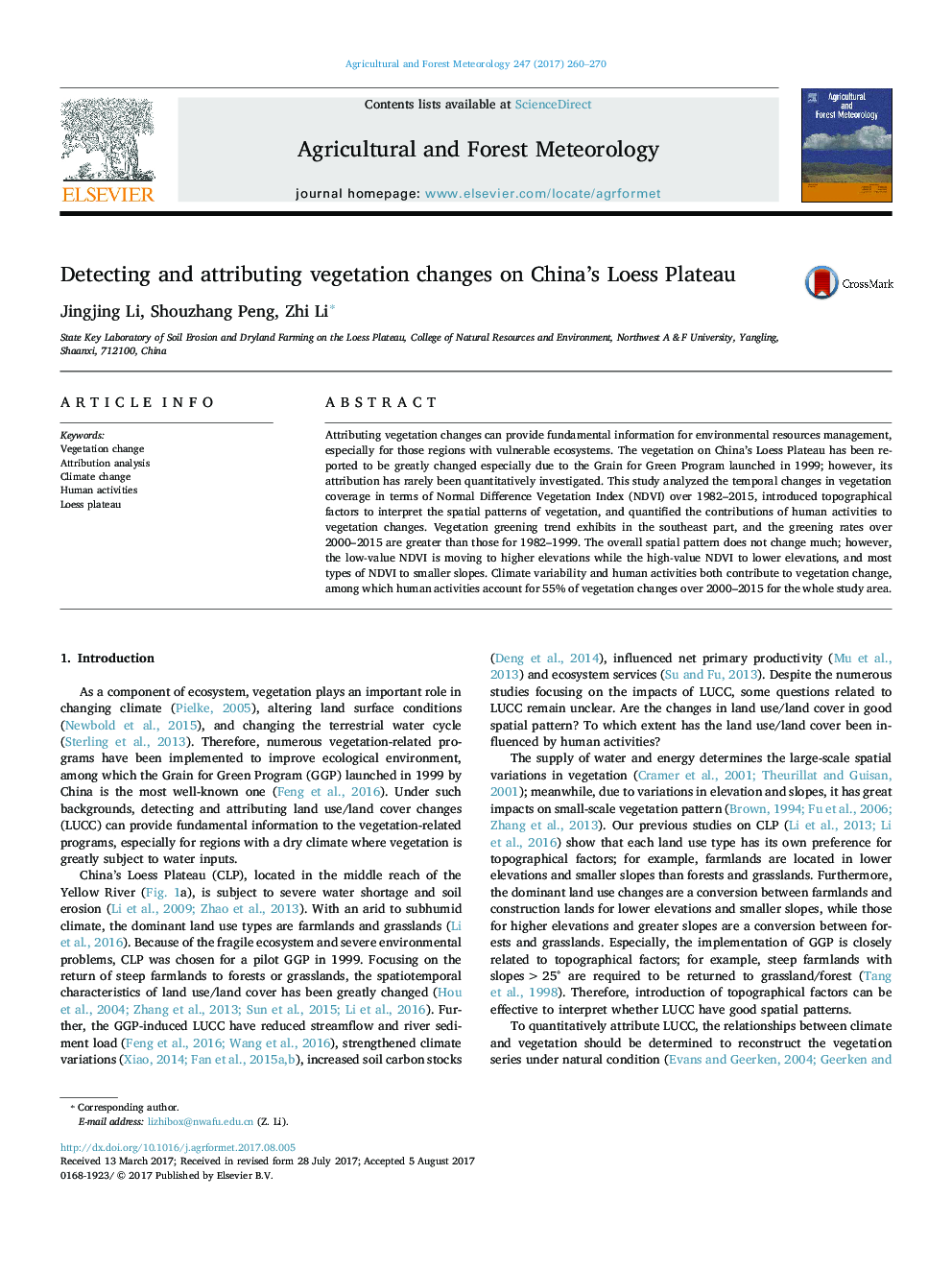| Article ID | Journal | Published Year | Pages | File Type |
|---|---|---|---|---|
| 6457770 | Agricultural and Forest Meteorology | 2017 | 11 Pages |
â¢A new method is developed to separate the impacts of environmental changes on vegetation.â¢Vegetation has been increasing after 1999 on China's Loess Plateau.â¢Vegetation change is closely related to topographical factors.â¢Human activities have greater contributions to vegetation change than climate variability.
Attributing vegetation changes can provide fundamental information for environmental resources management, especially for those regions with vulnerable ecosystems. The vegetation on China's Loess Plateau has been reported to be greatly changed especially due to the Grain for Green Program launched in 1999; however, its attribution has rarely been quantitatively investigated. This study analyzed the temporal changes in vegetation coverage in terms of Normal Difference Vegetation Index (NDVI) over 1982-2015, introduced topographical factors to interpret the spatial patterns of vegetation, and quantified the contributions of human activities to vegetation changes. Vegetation greening trend exhibits in the southeast part, and the greening rates over 2000-2015 are greater than those for 1982-1999. The overall spatial pattern does not change much; however, the low-value NDVI is moving to higher elevations while the high-value NDVI to lower elevations, and most types of NDVI to smaller slopes. Climate variability and human activities both contribute to vegetation change, among which human activities account for 55% of vegetation changes over 2000-2015 for the whole study area.
